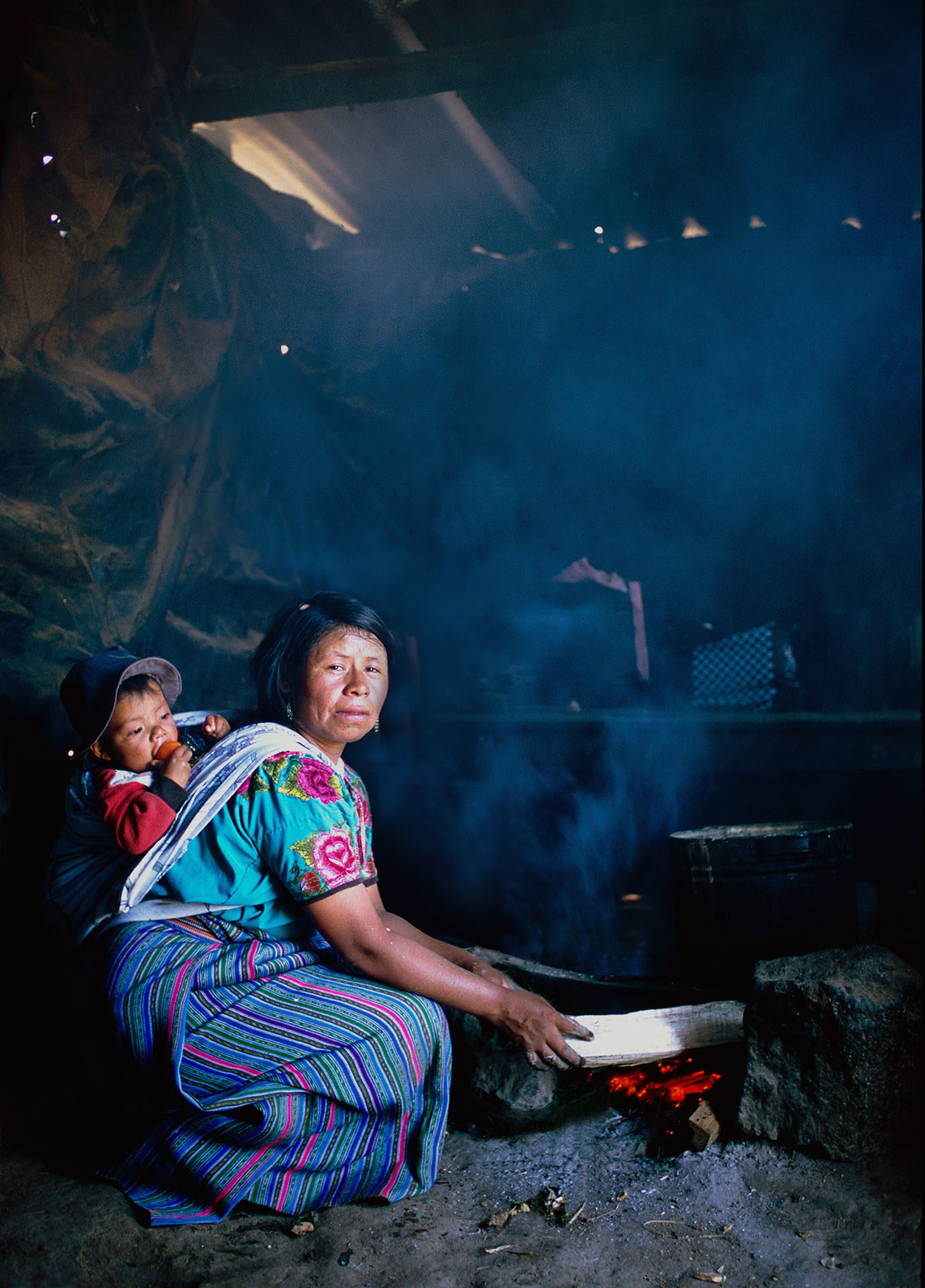Environment and Health
This page includes a short biography to explain how my professional interests and work developed, and where these are headed.
I studied Medicine at Cambridge University and the London Hospital and then trained in General Practice before embarking on a career in Epidemiology and Public Health.
 Among the influences for me choosing this path were studying the History of Medicine in my last year at Cambridge, which taught me how important social and environmental factors were to the health of populations.
Among the influences for me choosing this path were studying the History of Medicine in my last year at Cambridge, which taught me how important social and environmental factors were to the health of populations.
Loneliness and poor housing conditions contribute to mental health problems among older people


A traditional 3-stone wood fire in the San Marcos region of western Guatemala
I went on to study Epidemiology through an MSc at the London School of Hygiene and Tropical Medicine (1985), and then a PhD in Epidemiology (1991).
I worked in London on a number of topics, including cardiovascular disease, unplanned pregnancy and suicide, becoming more and more interested in how the social and physical environment shaped health and lives. I developed my passion for photography, illustrating public health reports, and taking a course in photojournalism. Over the years, I looked for ways to use documentary photography to illustrate the social and environmental impacts on health that were the subject of my research.
It was during this time that I had the opportunity to work on a study of how household air pollution from traditional cook stoves in the highlands of Ladakh in northern India caused serious lung disease; in that setting, the main fuel was yak dung, and highly polluting. This was to be the start of a long-term interest in this issue, which affects billions of poor people across Asia, Africa and Latin America.
Moving to the University of Liverpool in 1992, I continued to develop research on the topic of household energy, air pollution and health. I also began working closely with The World Health Organisation to make a contribution to action in countries and at the international level to address the problem.
One of the most important of these projects was the RESPIRE trial, an experimental study designed to evaluate the impact of an improved chimney stove (compared to the traditional open wood fire) on child pneumonia.

Plancha-type wood stove used in the RESPIRE clinical trial


At Liverpool, I served as Director of the MPH programme (1993-2006); during this time we developed new research methods modules which have now been published as a text book by Wiley: Quantitative Research Methods for Health Research.
From 2009, I worked part-time at the WHO in Geneva supporting the programme on household energy, air pollution, health and climate change, and led development of new WHO air quality guidelines for household fuel combustion that were published in 2014: WHO Indoor Air Quality Guidelines for Household Fuel Combustion.
I am now retired from the University of Liverpool, but continue to collaborate on clean energy access research and policy work in Cameroon, Ghana and Kenya, and elsewhere. One of our major activities will be ‘telling the story’ of this research and development work through feature articles, interviews, photographs and video, and also on the wider perspective of the energy transition across lower and middle-income countries (LMICs).
LPG represents one of the best options for households wanting to switch to clean cooking fuel in developing countries, as it is abundant, easy to store and transport, and very practical. As part of our work on the transition to LPG being sought by governments of a number of African countries, I contributed to a Report (‘LPG as a Clean Cooking Fuel for Developing Countries‘), published by the German Development Bank (KfW) on LPG, looking at its affordability, and potential impacts on health, climate and forests.
I am also helping to bring together experience on access to clean fuels through case studies from around the world being compiled by the NIH-funded Clean Cooking Implementation Science Network . Among recent outputs have been a set of case studies on access to clean fuels in lower and middle-income countries (LMICs), including on the LPG Masterplan for Cameroon.

Filling LPG gas bottles at the GlocalGaz plant, Limbe, Cameroon

A highly polluted wood-fired fish drying shed in Limbe, Cameroon